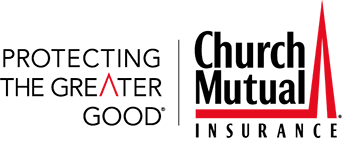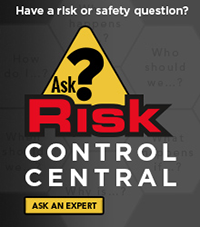Fall maintenence and camp clean up
Now that the busier summer months are winding down, you should find time in your camp or conference center’s schedule to devote toward completing important fall maintenance activities. Preventative maintenance is especially important for organizations that might be closing down some or all of their buildings in preparation for the winter months.
Here are some best practices to consider when prepping your buildings for continued use, a reduction in operations, or closing them down prior to the upcoming winter months:
- Develop a list of maintenance items by asking employees if they are aware of any current problems such as:
- Leaking roofs, safety issues with electrical lights and outlets, faulty or leaking plumbing devices/pipes/connections.
- Opening and closing problems with windows or doors.
- Operational issues with furnaces or water heaters.
- Loose or hazardous handrails or step or trip/fall issues involving walking surfaces (parking lots, sidewalks, beaches, dirt paths/trails, and other areas)
- Safety concerns with sports and recreational equipment.
It’s surprising how many relevant safety-related items are revealed during discussions with knowledgeable staff.
- Conduct a walk-around survey of your buildings and outdoor equipment, with one or more members of your staff, and record any maintenance or safety issues that need attention. Self-inspections can help make your facilities last longer and provide a safer, more secure environment for employees, campers and guests. Use your smartphone or a digital camera to take photos of items and share them with us and your staff. Consider using Church Mutual Insurance Company’s Self-Inspection Safety Checklist for Camps and Conference Centers to assist with your self-inspection. Download a free copy from their website.
- Arrange for a qualified HVAC contractor to inspect and maintain all gas/oil-fired furnaces and hot water heaters to make sure they operate and vent properly. It’s essential to verify that exhaust vent pipes are connected correctly and are not obstructed by nests, animals or other debris. Improper venting can lead to carbon monoxide health issues or even death.
- Verify that smoke alarms function properly in areas that will be occupied during the next several months, and depending on heating/hot water systems used, verify that carbon monoxide detectors are operational. In addition, any buildings that will be occupied should have fully charged and readily available fire extinguishers. Check each extinguisher’s tag for current inspection date, and replace or update out-of-date extinguishers.
- Protect water pipes used for potable water or sprinkler systems from freezing and causing water damage. Drain water pipes and fixtures that will not be used during the off-season (this could include using an appropriate type of anti-freeze as recommended by a plumbing professional) or provide appropriate heat and install insulation to keep all water systems from freezing.
- Prevent rodents, snakes, insects and other animals from inhabiting buildings by sealing all access points around foundations, windows/doors, eaves and chimneys/vents. In addition to the mess certain pests leave behind, they can also cause structural damage or create a fire exposure by gnawing on energized electrical wires. If electrical power isn’t needed for a building during the off-season, consider temporarily shutting off its main power source until the building will be reoccupied.
- Remove the buildup of combustible debris (leaves, pine needles, etc.) from roofs, gutters and around structures to help prevent the spread of fire if embers are blown from other sources. Make sure gutters and downspouts drain properly to help reduce ice-damming or prevent water from seeping in next to a foundation wall or slab.
- Trim tree limbs and shrubs to prevent them from rubbing against and damaging roofing or siding material during windy conditions. Proper trimming also prevent rodents or people from easily climbing onto a roof and/or overhang and finding access points into a building.
Time, weather conditions and wear and tear take their toll on buildings as they age. Cement blocks and mortar crack, windows leak, siding materials fail, steps crumble and roofs deteriorate. Following the best practices outlined in this article should help your organization address important preventative maintenance issues and take proactive steps toward protecting your buildings, their contents and people.
To review more safety resources, visit https://www.churchmutual.com/campsafety.







